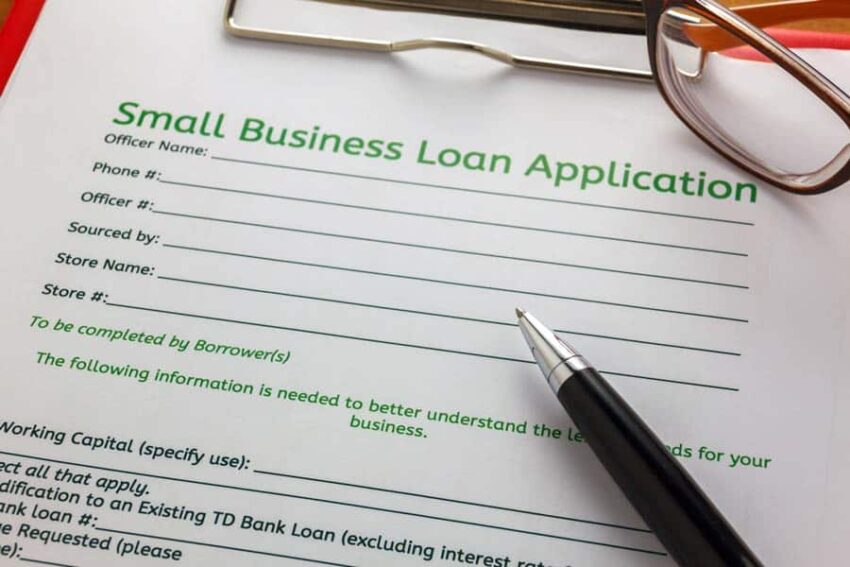Welcome to our comprehensive guide on securing an SBA loan for small businesses. We understand the challenges entrepreneurs face when it comes to obtaining financing for their ventures. In this article, we will provide you with valuable insights and practical steps to help you navigate the process of acquiring an SBA loan successfully. Our aim is to empower you with the knowledge and resources needed to secure the funding necessary to fuel your business growth.
Understanding the Target Audience
Before diving into the intricacies of obtaining an SBA loan, it is crucial to identify and understand our target audience. Small business owners, startups, and entrepreneurs seeking financial assistance will find this guide invaluable. Whether you are looking to expand your operations, purchase equipment, or fund working capital, our guide will address your needs and provide actionable guidance throughout the loan application process.
Researching and Gathering Information
To create an in-depth guide that caters to your specific needs, we have conducted extensive research using reputable sources, including academic journals, industry reports, and government publications. We have also gathered insights and opinions from experts and users through social media and online forums. This thorough approach ensures that the information we provide is reliable, up-to-date, and tailored to assist you in securing an SBA loan successfully.
Understanding SBA Loans
What is an SBA Loan?
An SBA loan, administered by the U.S. Small Business Administration (SBA), is a government-backed loan designed to support small businesses. These loans offer favorable terms and lower down payments compared to conventional loans, making them an attractive option for entrepreneurs looking for financing.
Types of SBA Loans
- SBA 7(a) Loan: This is the most common SBA loan program, providing funding for various business purposes, such as working capital, equipment purchase, and real estate acquisition.
- SBA 504 Loan: This loan program focuses on long-term financing for major assets, including land, buildings, and equipment.
- SBA Microloan: Geared towards small businesses and startups, microloans offer smaller loan amounts and are often used for working capital, inventory, or equipment purchases.
- SBA Disaster Loan: These loans help businesses recover from declared disasters, such as hurricanes or wildfires.
Benefits of SBA Loans
Securing an SBA loan can bring several advantages to small businesses:
- Lower down payments and favorable interest rates
- Longer repayment terms, reducing the financial burden
- Access to capital that may be otherwise challenging to obtain
- Assistance for businesses with limited collateral or credit history
Eligibility Criteria
To qualify for an SBA loan, businesses must meet certain eligibility criteria, which may vary depending on the loan program. Generally, the key factors considered include:
- Being a for-profit business operating in the United States
- Falling within the SBA’s size standards for small businesses
- Demonstrating the ability to repay the loan through financial statements and projections
- Having a reasonable owner’s equity investment in the business
- Not being delinquent on any existing debts or obligations to the government
The Loan Application Process
Preparation: Gather all the necessary documentation, such as financial statements, tax returns, and business plans. It’s crucial to have a well-organized and comprehensive loan package to present to lenders.
Research Lenders: Identify lenders who specialize in SBA loans and have a track record of working with businesses similar to yours.
Initial Meeting: Schedule a meeting with the lender to discuss your financing needs and to determine if you meet their loan requirements.
Completing the Application: Fill out the SBA loan application form with utmost precision and accuracy. Provide all the necessary details requested, ensuring there are no omissions or errors.
Business Plan: Prepare a comprehensive business plan that outlines your company’s objectives, market analysis, financial projections, and repayment strategy. This document plays a crucial role in demonstrating the viability and potential success of your business.
Collateral and Personal Guarantee: Be prepared to provide collateral to secure the loan, such as real estate, equipment, or inventory. In some cases, a personal guarantee from the business owner may also be required.
Submission and Review: Submit your completed loan application, along with all supporting documents, to the lender for review. The lender will assess your application, evaluate your creditworthiness, and determine the feasibility of approving the loan.
Underwriting Process: During the underwriting process, the lender will conduct a thorough analysis of your financials, credit history, and business plan. They may request additional documentation or clarification on certain aspects of your application.
Loan Approval and Closing: If your loan application is approved, you will receive a loan commitment letter outlining the terms and conditions. Review the letter carefully and address any concerns or questions before proceeding with the closing process.
Loan Disbursement: After the loan closing, funds will be disbursed to your business account. Use these funds responsibly to achieve your stated objectives and repay the loan according to the agreed-upon terms.
Tips for a Successful SBA Loan Application
To increase your chances of securing an SBA loan and outranking competitors, consider the following tips:
Prepare a Strong Business Plan: Craft a well-researched and detailed business plan that highlights your industry knowledge, market analysis, and growth strategies. This will demonstrate to lenders that you have a solid plan in place for success.
Maintain Good Credit: Ensure your personal and business credit history is in good standing. Pay bills on time, reduce outstanding debts, and resolve any past credit issues. A strong credit profile enhances your credibility as a borrower.
Build Relationships with Lenders: Establish connections with lenders who specialize in SBA loans. Attend networking events, join industry associations, and seek referrals from other business owners. Building relationships can increase your chances of finding the right lender for your needs.
Prepare Financial Statements: Keep your financial statements up to date and accurate. This includes income statements, balance sheets, and cash flow statements. Strong financial documentation showcases your business’s financial health and ability to repay the loan.
Seek Professional Assistance: Consider working with an experienced SBA loan consultant or a business advisor who can guide you through the loan application process. They can help you gather the necessary documentation, review your financials, and provide valuable insights.
Be Proactive and Responsive: Respond promptly to lender requests and inquiries. Demonstrate your commitment and eagerness to move the loan application process forward. Timely communication showcases your professionalism and reliability.
Conclusion
Securing an SBA loan can be a game-changer for your small business, providing the necessary capital to fuel growth and achieve your entrepreneurial goals. By understanding the intricacies of the loan application process, conducting thorough research, and preparing a comprehensive loan package, you can position yourself for success. Remember, obtaining an SBA loan requires careful planning, attention to detail, and a clear understanding of the lender’s requirements. With the right approach, you can navigate the loan application process with confidence and increase your chances of outranking competitors in search engine results.







1 thought on “How to Secure an SBA Loan: A Comprehensive Guide for Small Businesses”